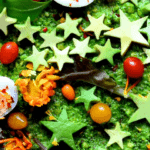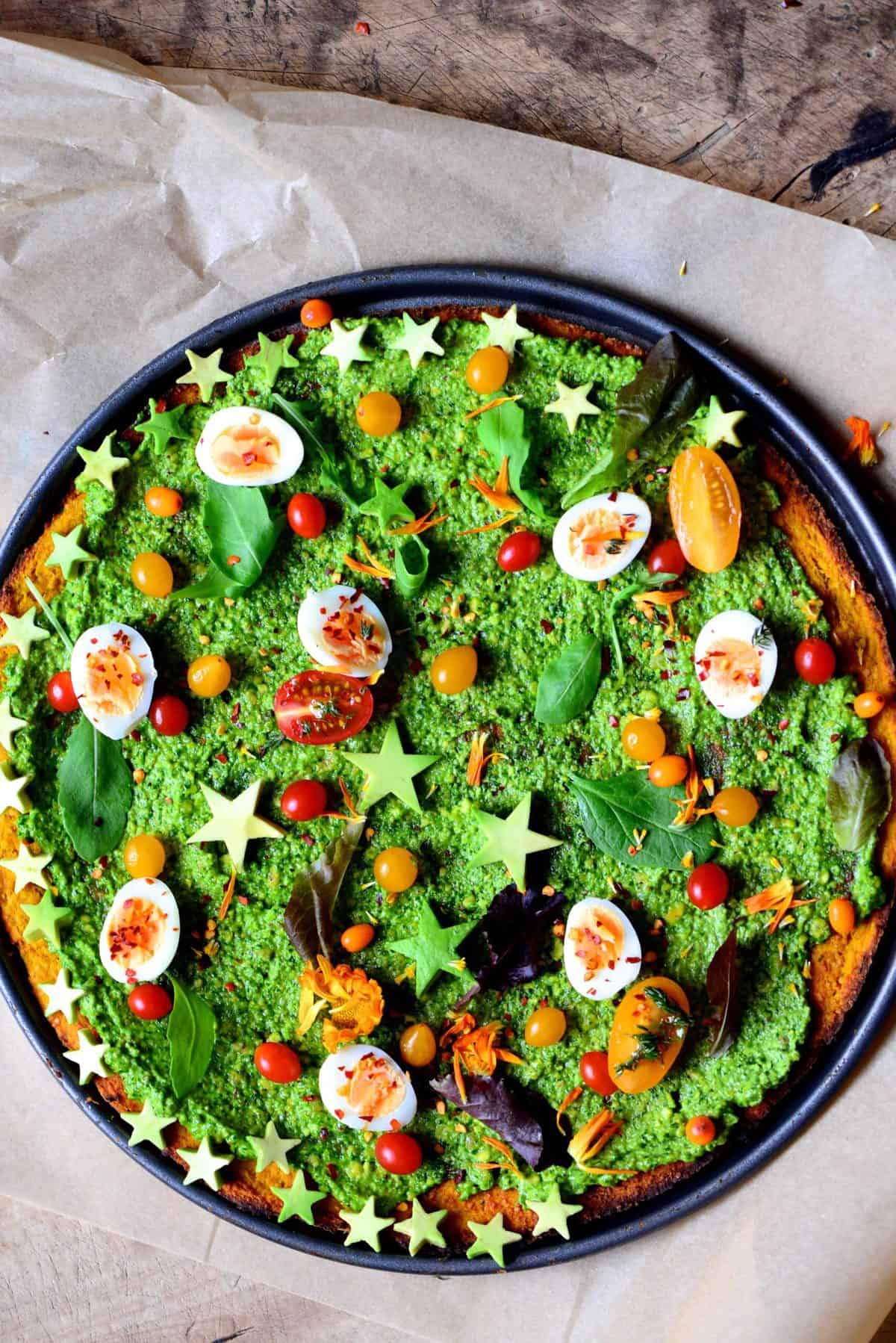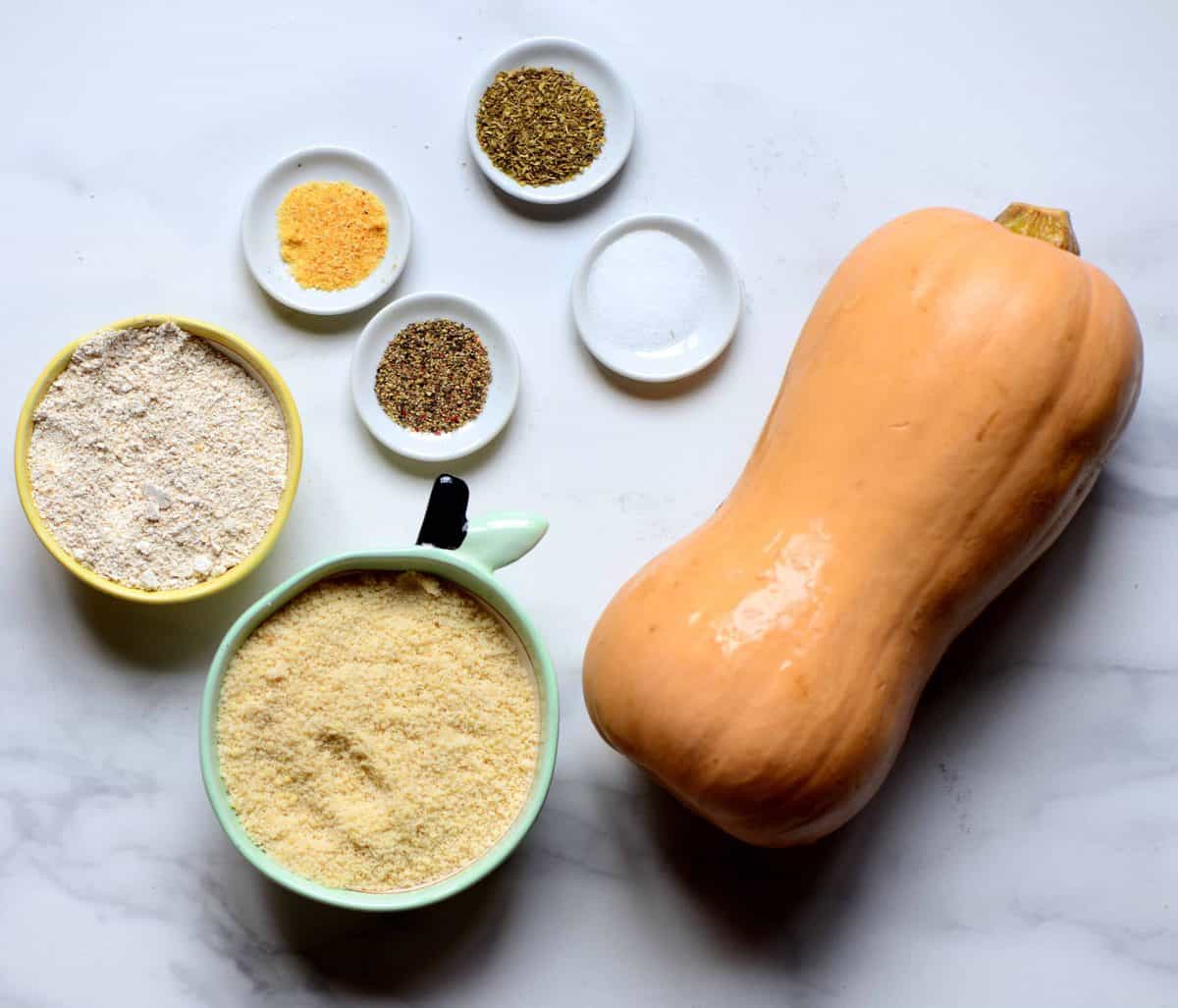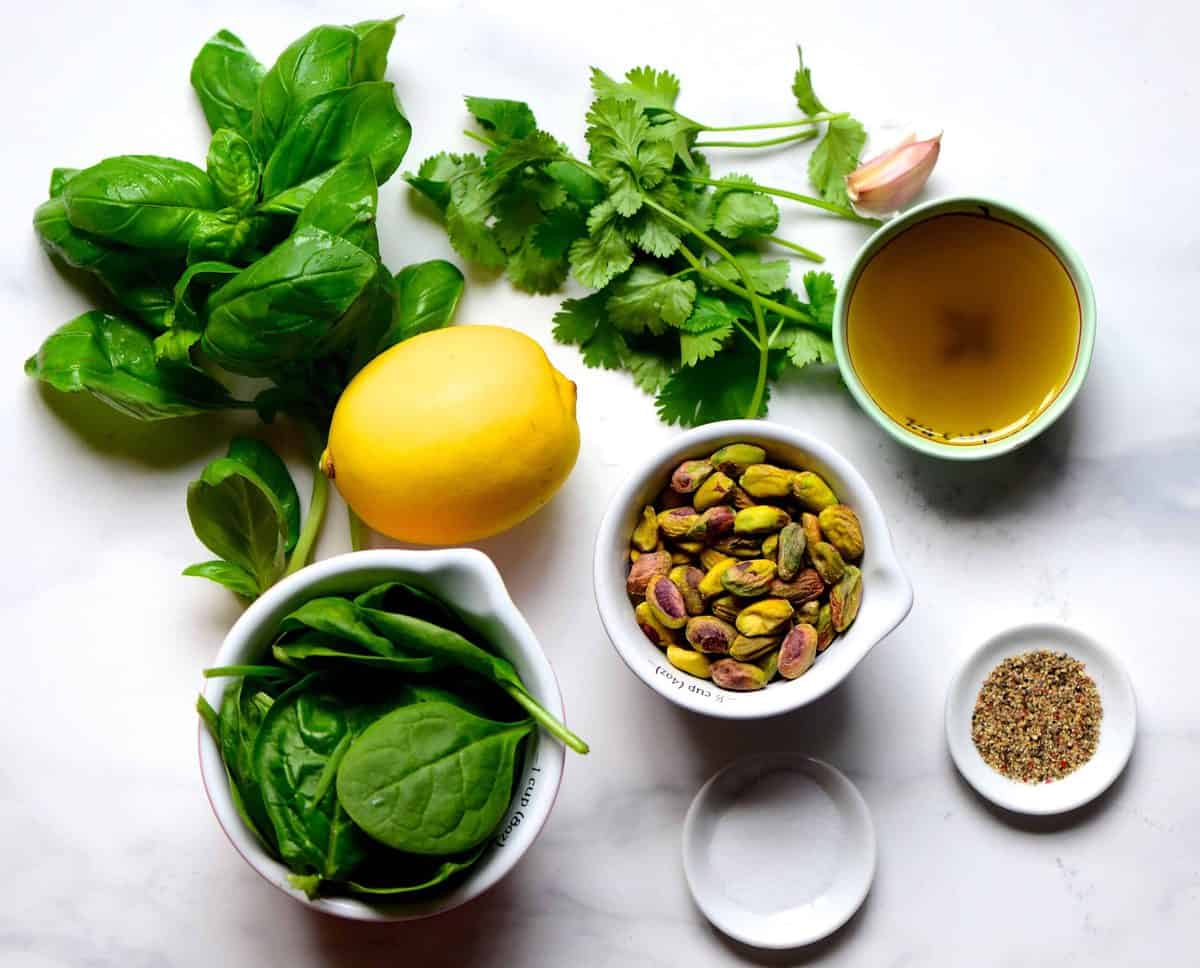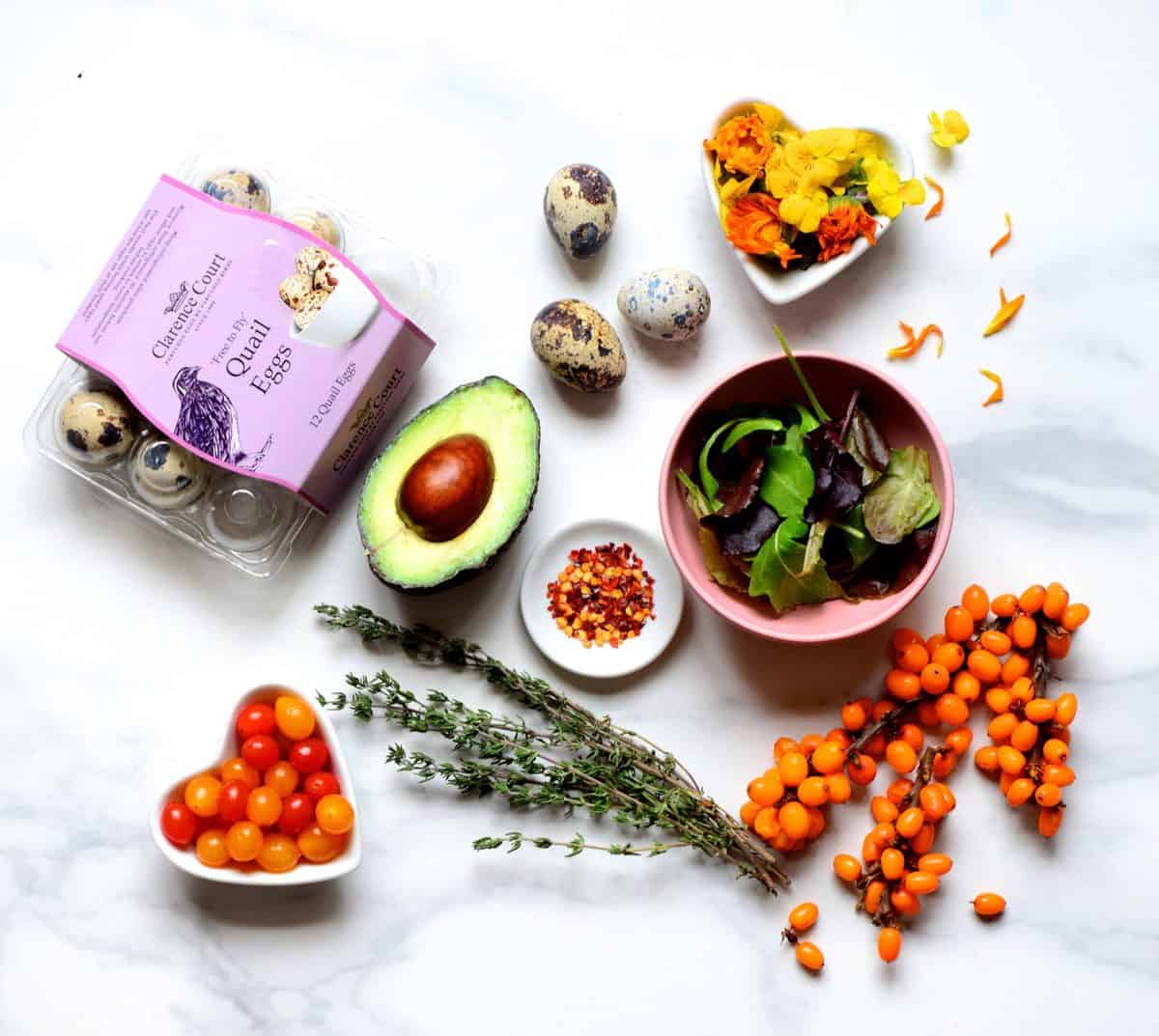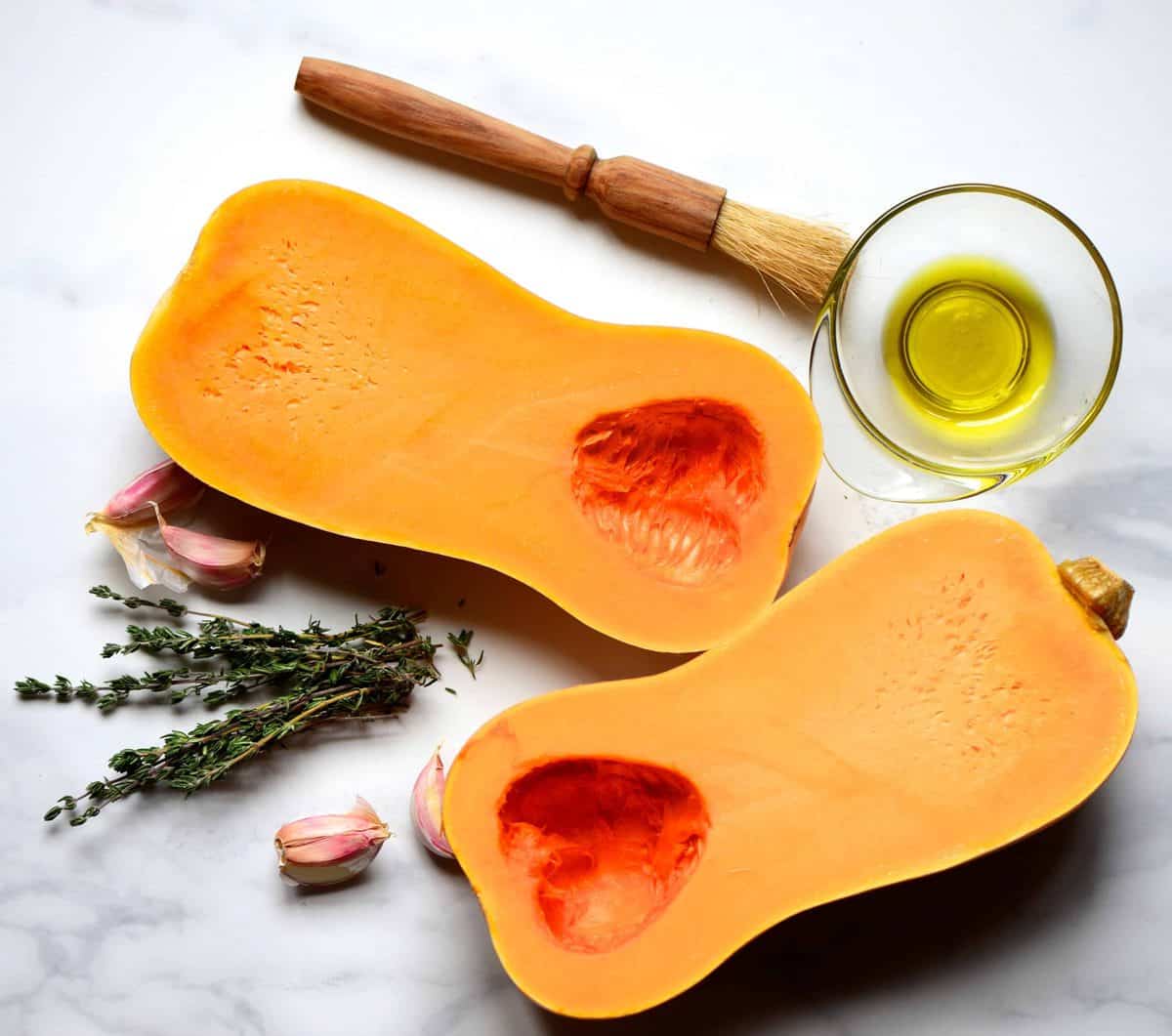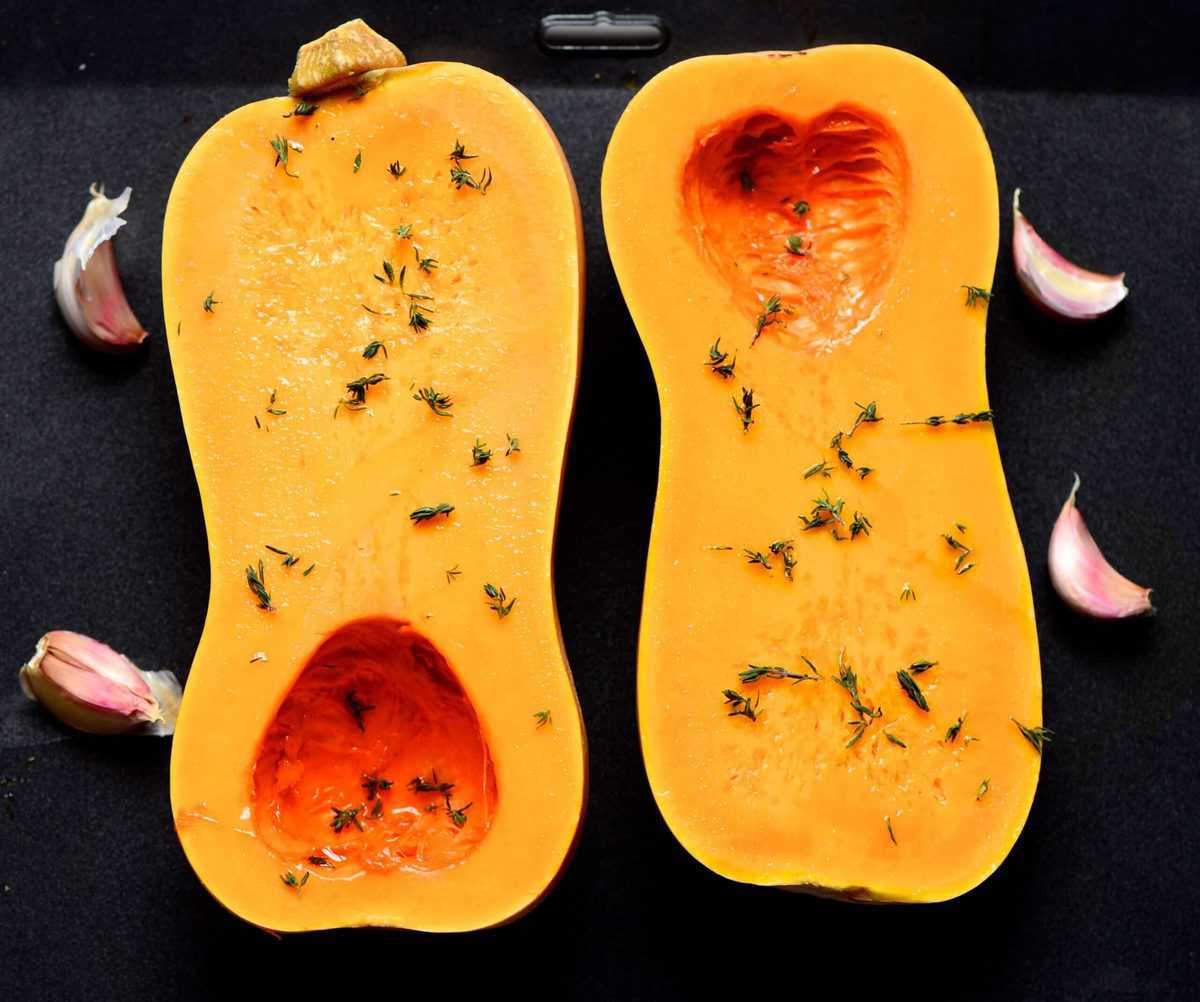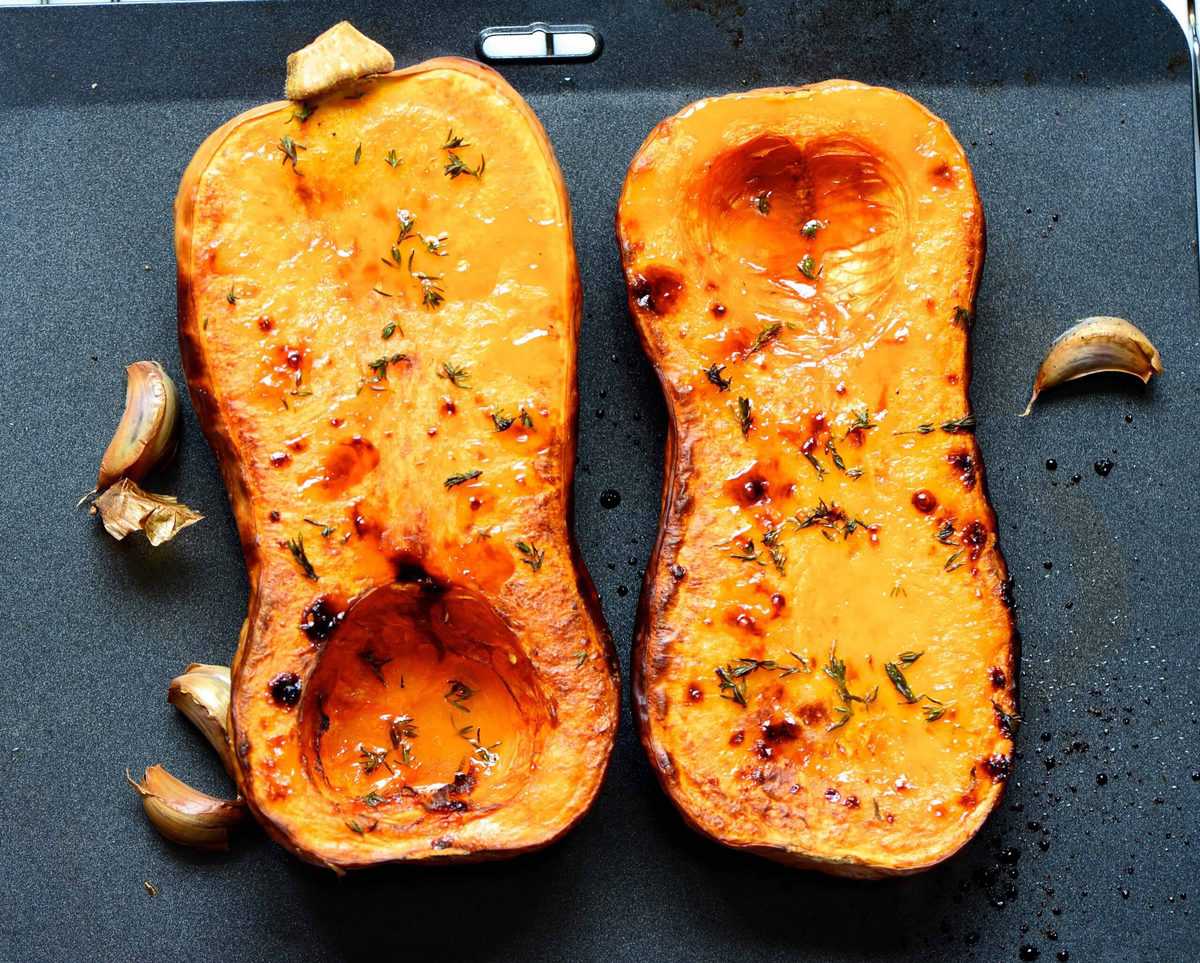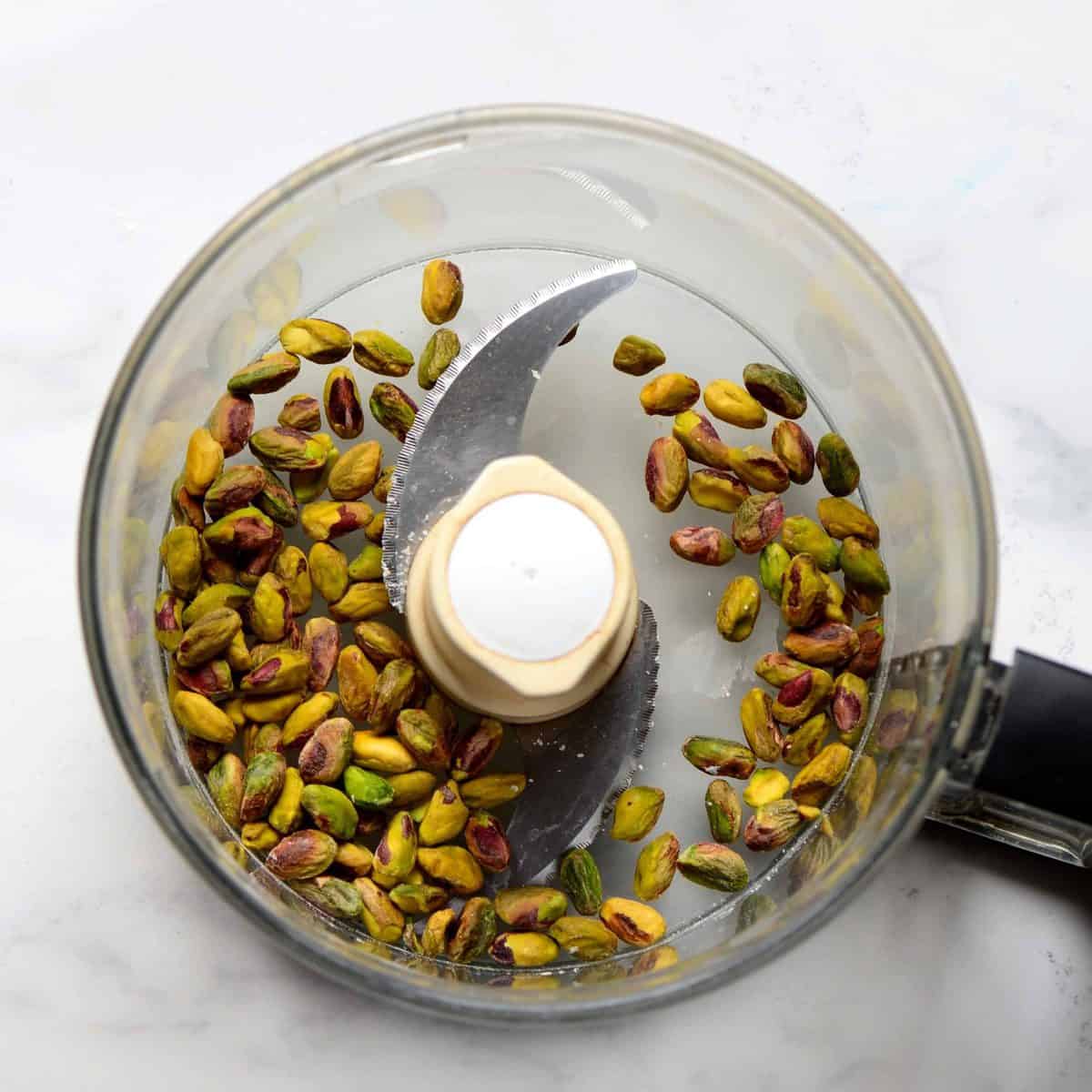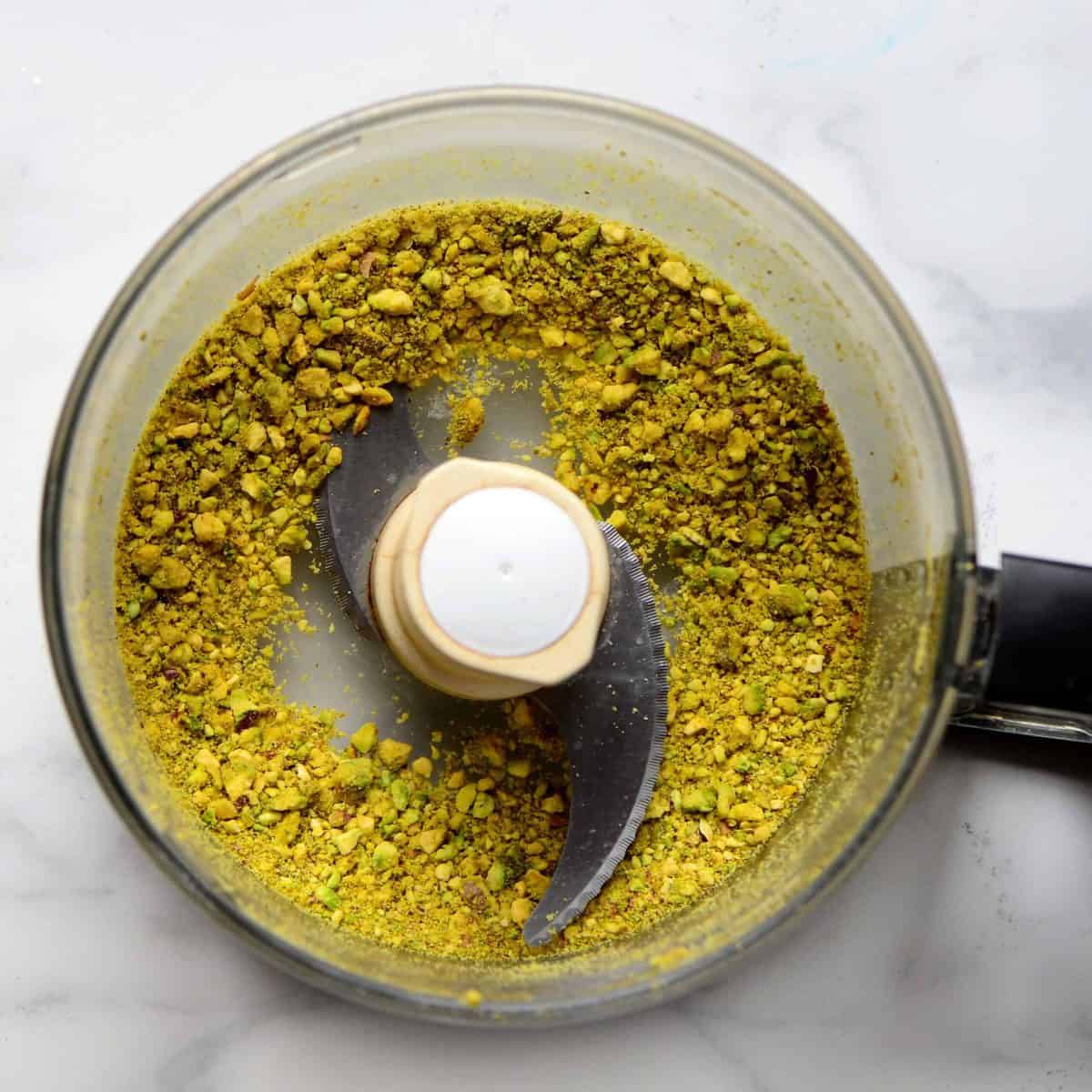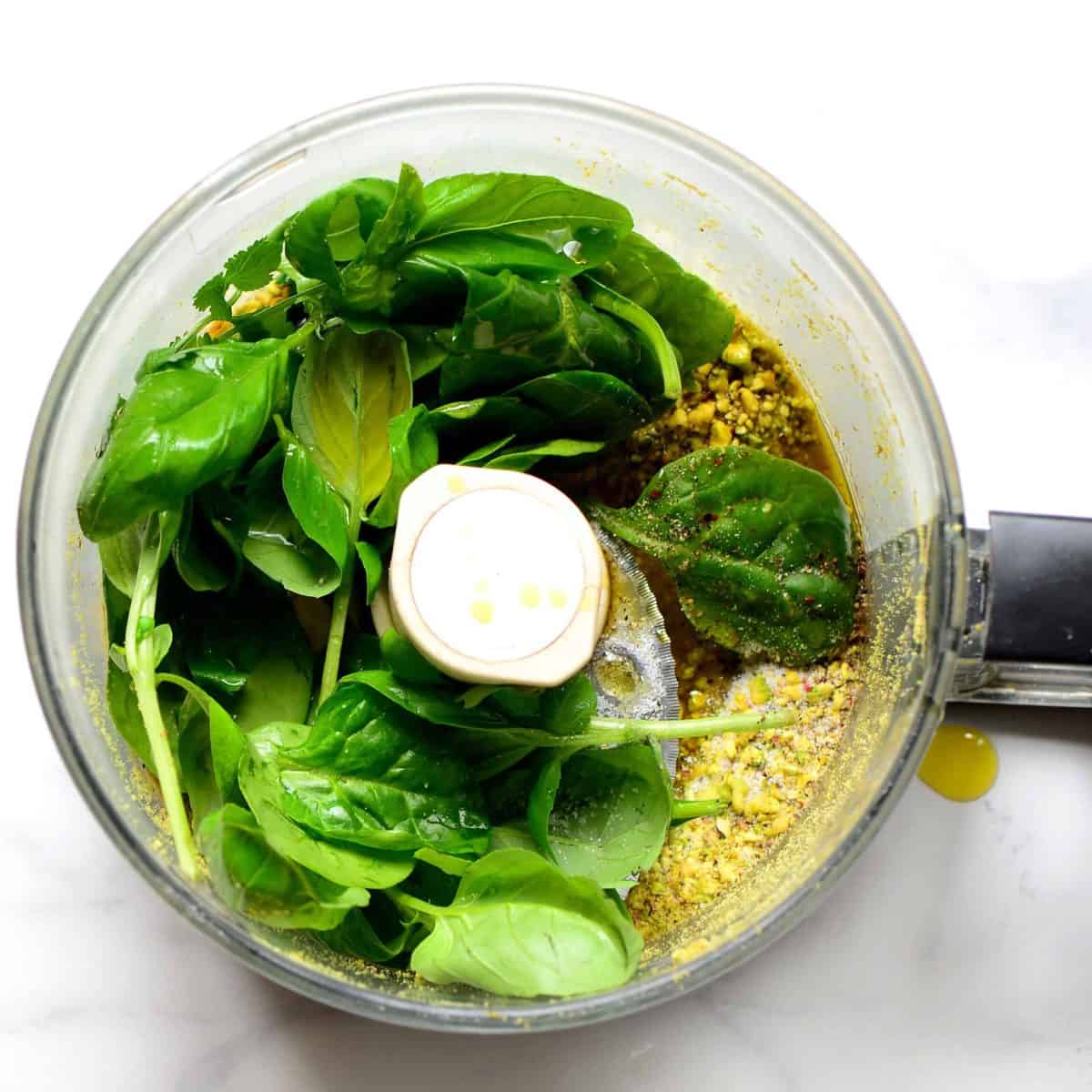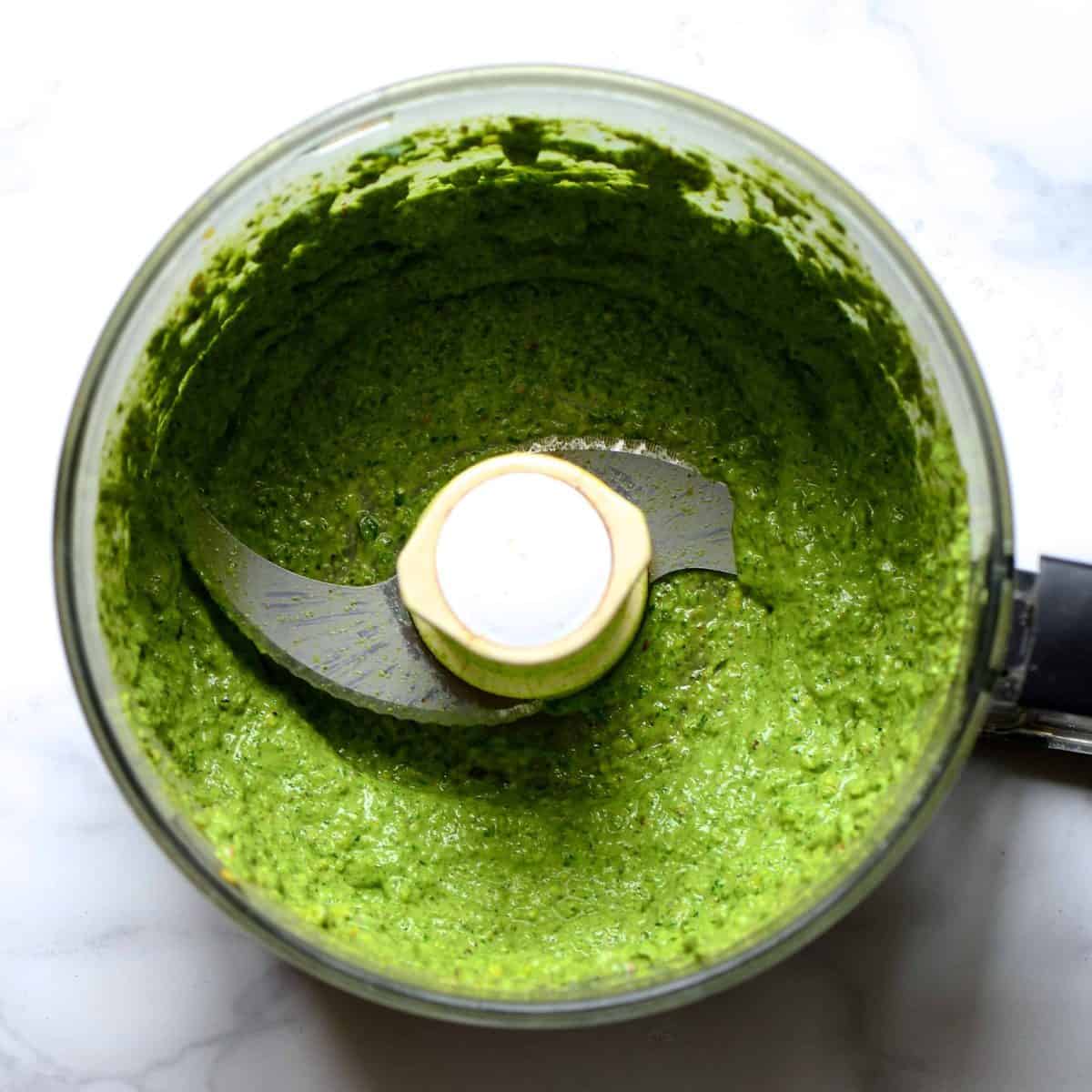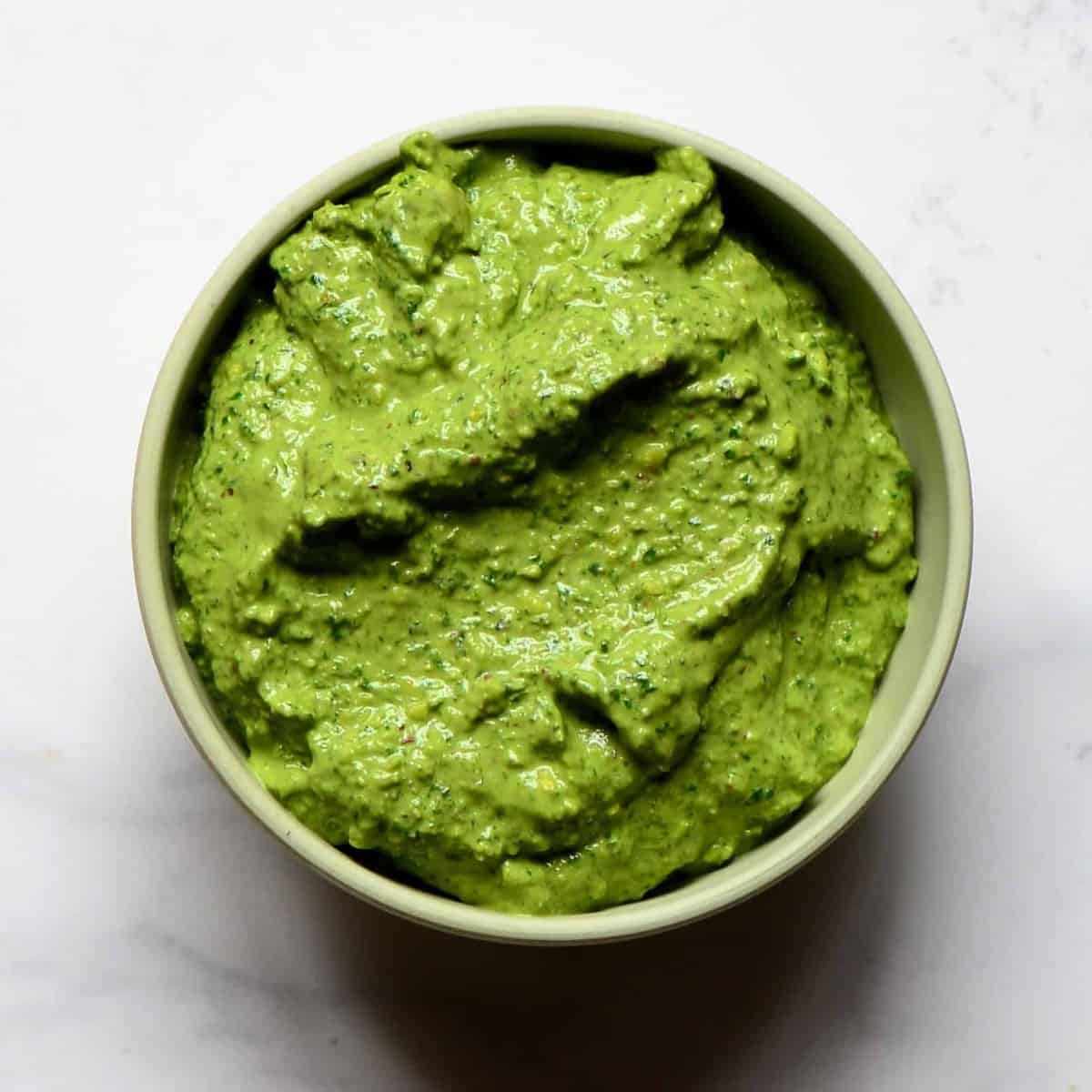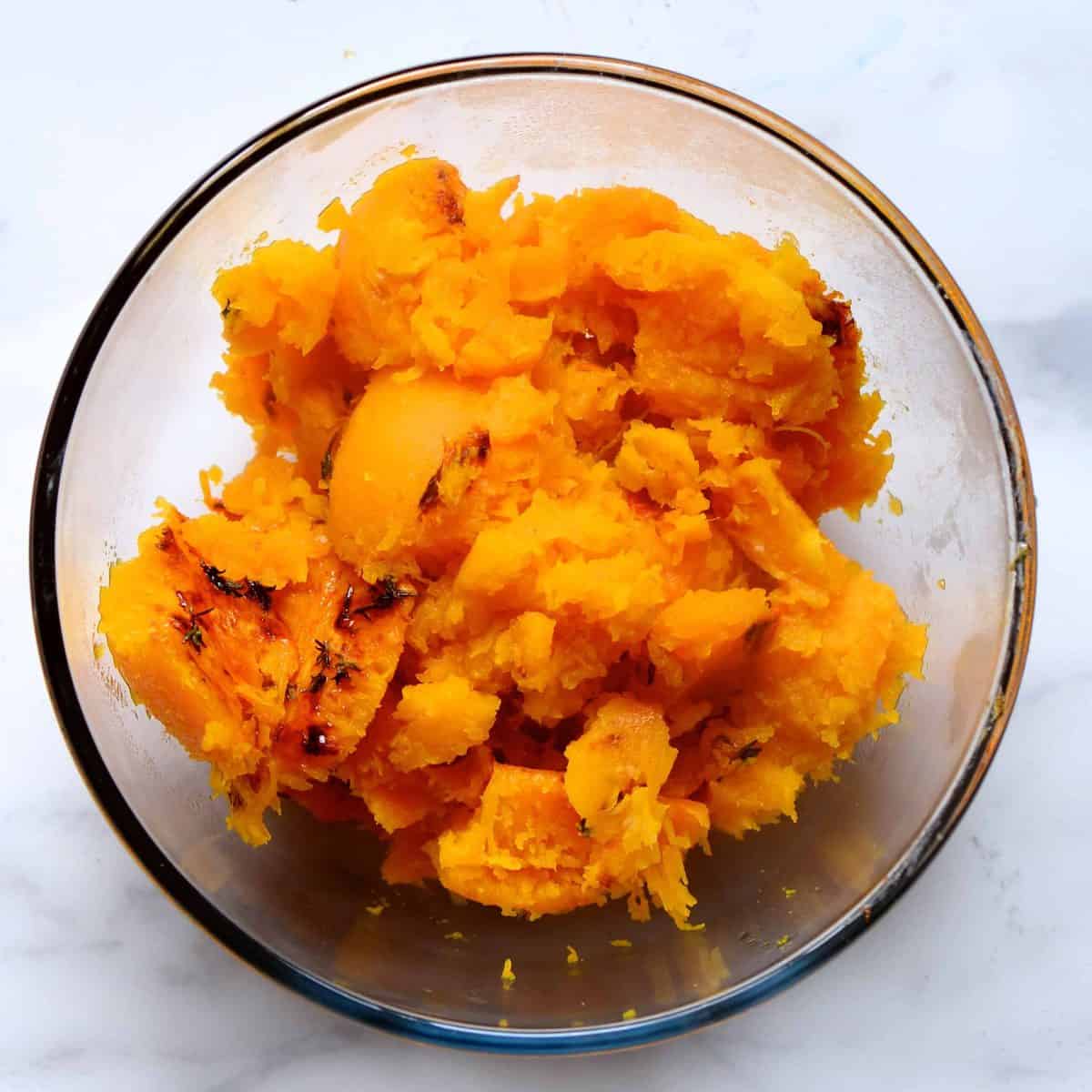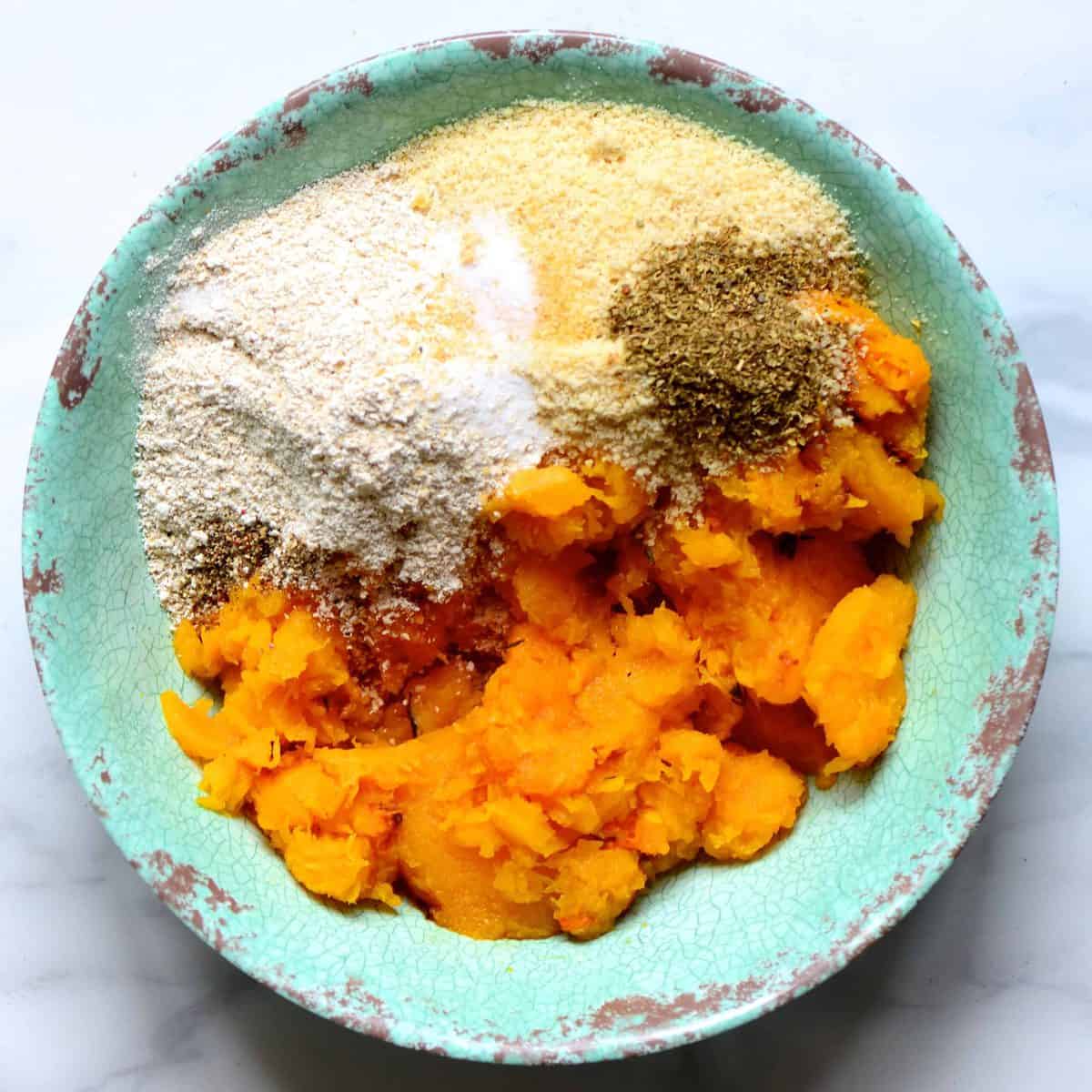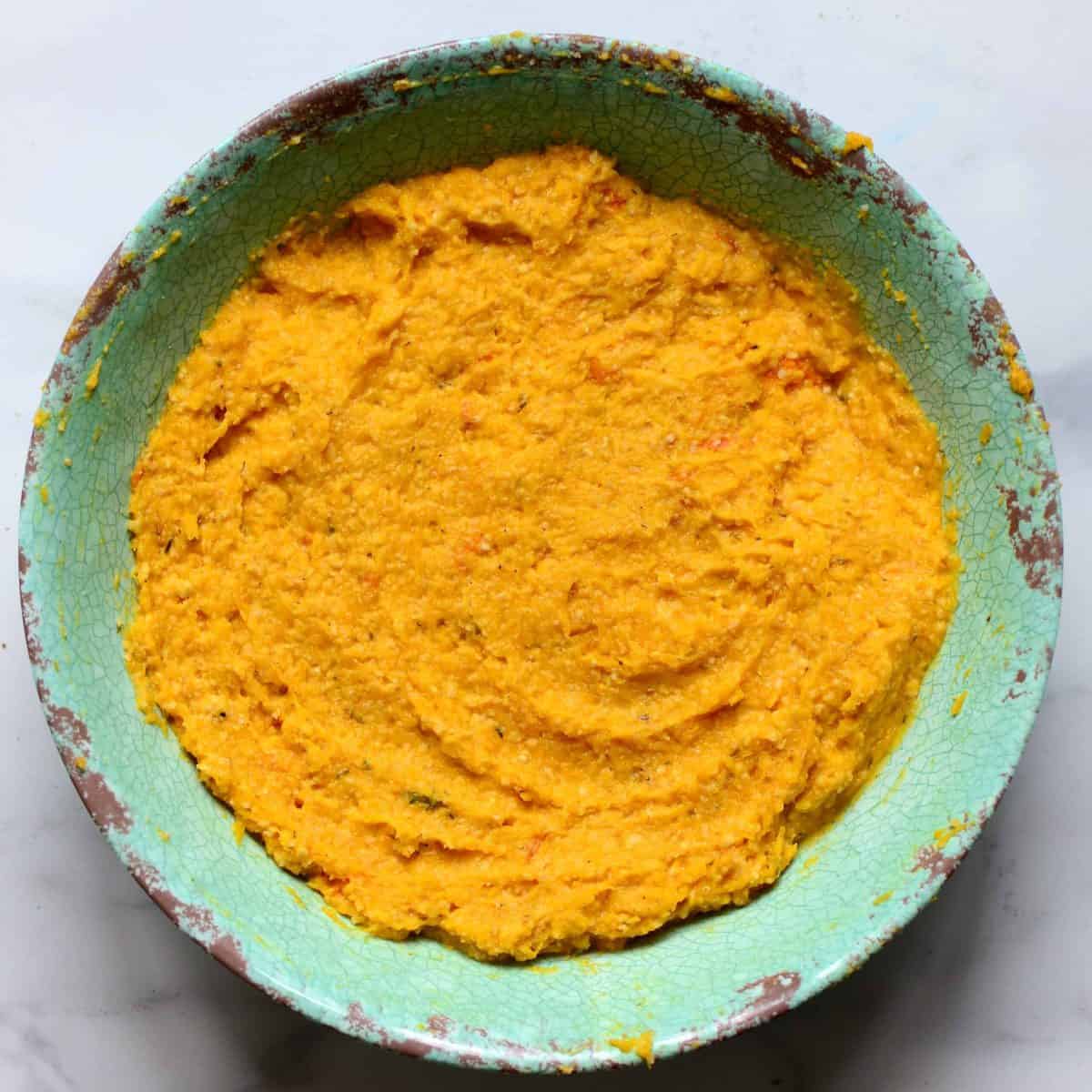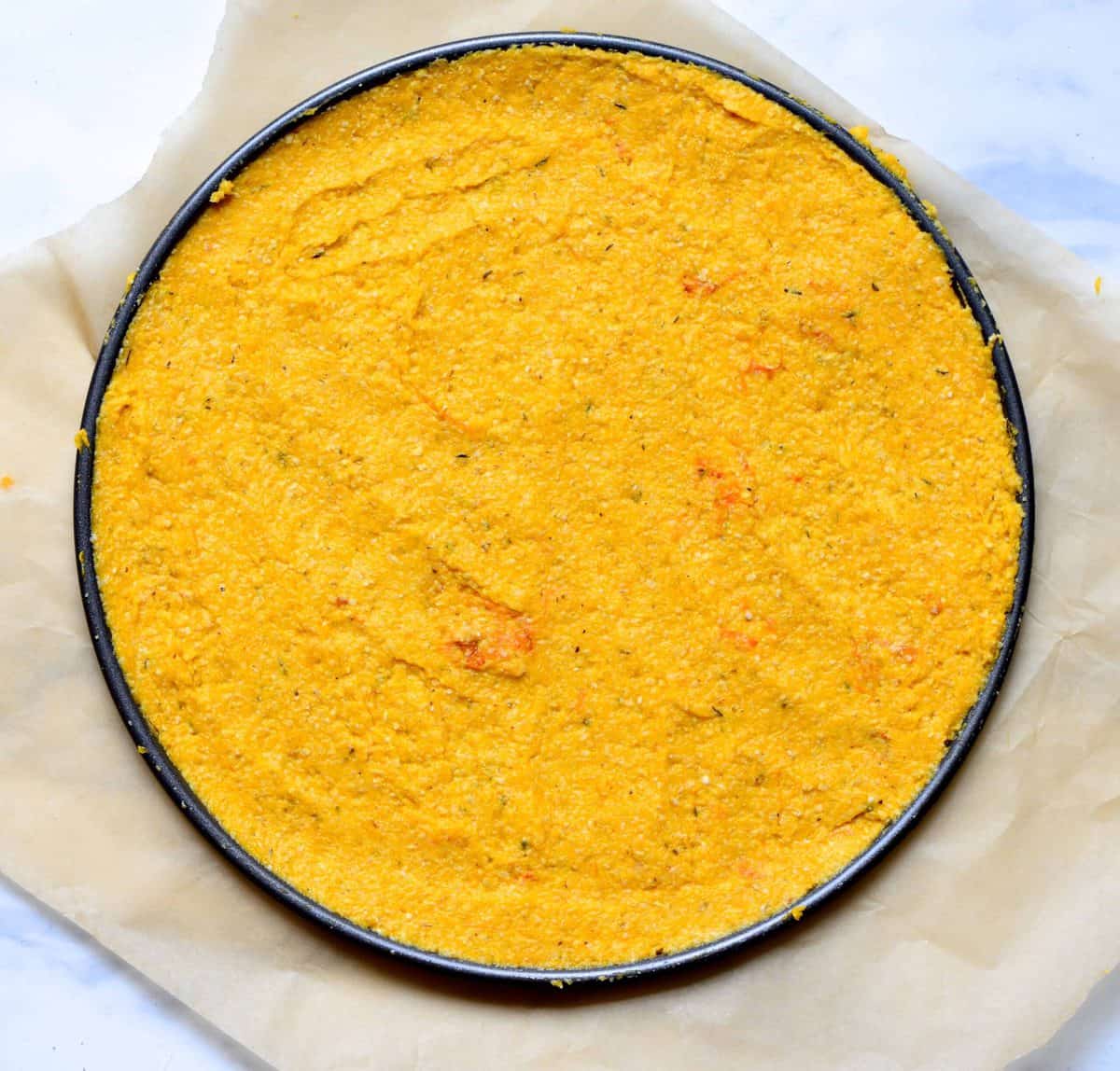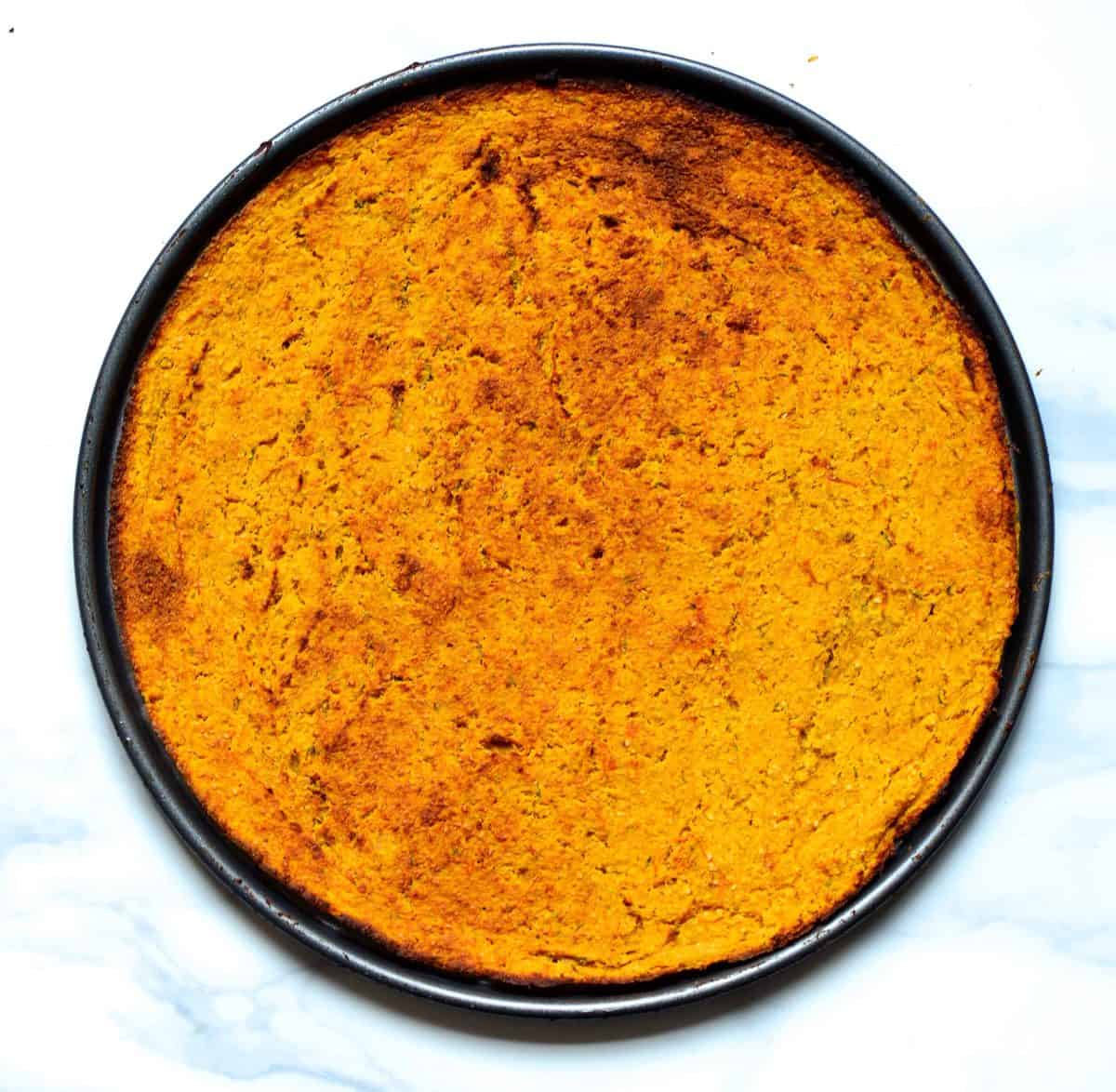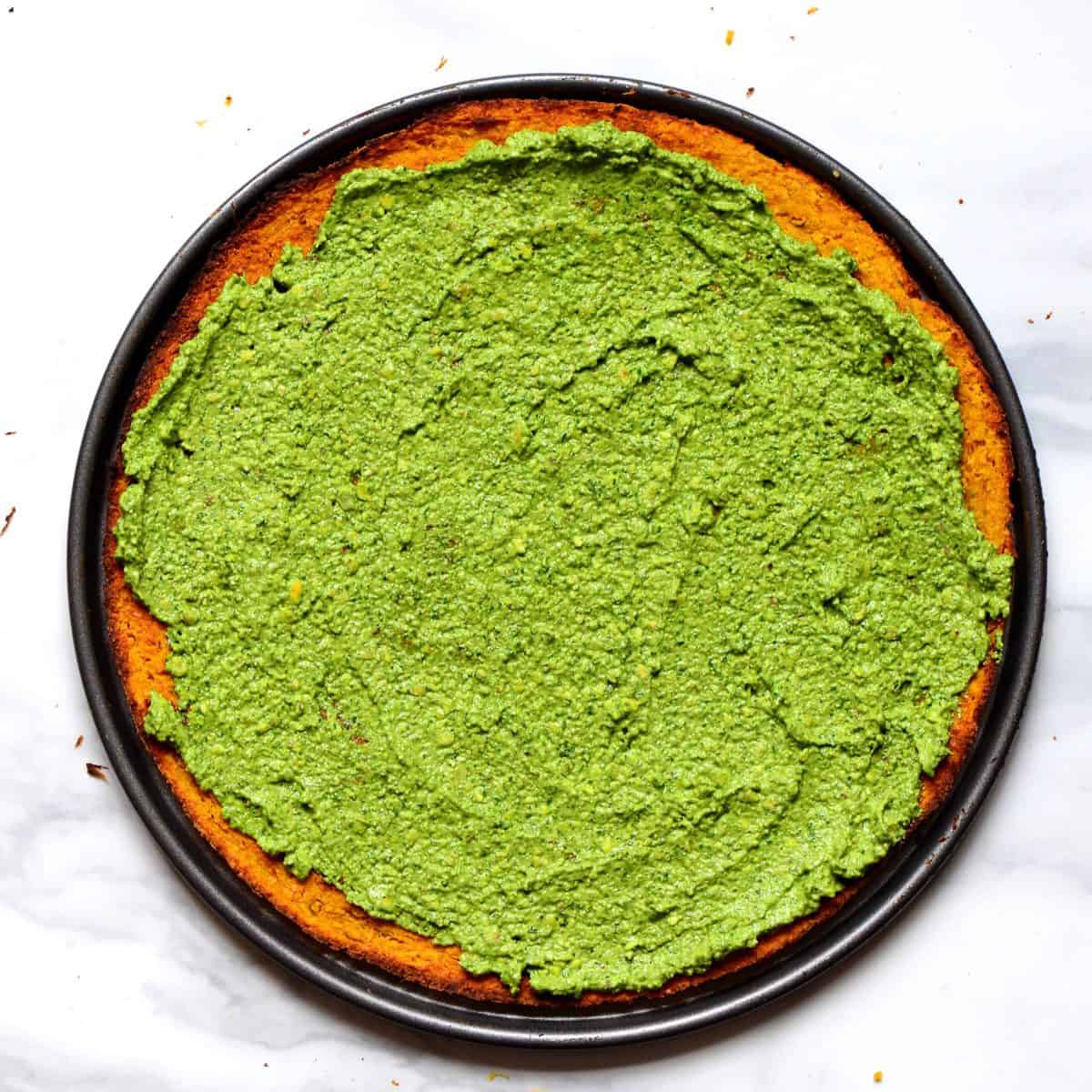When it comes to pizza, I’m not ashamed to say that I’m slightly obsessed. Yes, it’s not the healthiest meal out there – but that doesn’t mean that it can’t be twisted into something healthier than your ‘general’ pizza. The best way to do this is through the use of alternative pizza crusts like this butternut squash gluten-free, vegan pizza crust. If you want a ‘normal’ crust, then I have lots of love for that (here’s my Delicious Homemade Neapolitan pizza (Marinara style)). However, having experimented with LOTS of crust alternatives, I can tell you that it pays to experiment. Whether you want to find something for dietary reasons, health, or flavor – there is something for everyone. I’ve already posted recipes for Low-Carb Cauliflower Gluten-Free Pizza Crust (Mini Pizzas), Sweet Potato Crust Rainbow Pizza, and even breakfast pizzas – like this Strawberry Nutella Pizza or Protein Banana Pancake Pizza Recipe with fruit. Now, this butternut squash pizza crust is being shared as a flavorful low-carb, dairy-free, vegan, gluten-free pizza crust recipe (that can be adapted to nut-free and grain-free too!). However, while the long list of ‘free from’ may have you believe it may be free from flavor and enjoyment too – that couldn’t be further from the truth! In fact, this crust is a great way to cater to various dietary requirements without sacrificing flavor. Not only is this butternut squash pizza dough much healthier than classic pizza dough, but it also adds a wonderful sweet and savory flavor. When combined with a homemade pesto to make this specific butternut squash pesto pizza, friends and family are sure to be impressed. The sweetness of the butternut squash perfectly balances the savory, saltiness of the pesto while having both a wholesome, comforting, and yet ‘fresh’ flavor. This can then be topped with whatever additional toppings you love – be it vegetarian, vegan, etc. Of course, if you’re not in the mood for pesto, then this plant-based crust is absolutely delicious when served with marinara sauce or any of your favorite pizza toppings. Plus, the crust can even be made in advance and stored in the fridge or freezer to be reheated as and when needed.
The Ingredients
For the pizza base
Butternut squashAlmond flourOat flourDried oreganogarlic powdersalt and pepper
Read the recipe notes for suggestions of ingredient subs/additions/omissions.
For the basil pesto
Pistachios CilantroBasilLemonGarlic cloveolive oilsalt and pepper
The Toppings
Below are the particular ingredients are used within the images. Though, you can use whatever your favorite toppings are. I love to combine the pesto with tomatoes and avocado in most situations. Feel free to omit the eggs for a vegan pizza.
Quail eggs – I used Clarence Court quail eggs.Baby tomatoes, avocado, baby green leavesEdible flowersBuckthorn berries – I had them handy from another recipe, so definitely isn’t something I usually add.
Other Options
The sky is the limit when it comes to topping choices.
eggplantzucchinibroccoliniasparagusartichokemushroomolivesred onionsweetcornadditional salad greensfresh herbs
Plus, if you decide to swap out the pesto topping for a marinara/tomato base, then you may want to experiment with cheese/vegan cheeses. Like this:
Easy Stretchy Vegan Mozzarella Cheese or Easy Stretchy Vegan Mozzarella CheeseHomemade Goat CheeseSimple Smoky Vegan Cheddar CheeseSimple Herby Vegan Feta Cheese
The Step By Step Instructions
Step 1. Bake the butternut squash
First, preheat the oven to 180ºC/350ºF. Then, cut the butternut squash in half and brush it with olive oil and add any seasoning you prefer (I added fresh oregano). Roast in the oven for between 40-60 minutes (this can depend on the exact size of the squash and your particular oven). Make some deep slashes across the squash to reduce the cooking time slightly.
Step 2. Prepare the pesto
While the squash is roasting, prepare the pistachio pesto. In a food processor, blitz the pistachios to a chunky crumb consistency. Add the rest of the sauce ingredients and process until you have a thick paste-like consistency. This can take up to 2 minutes in some processors. While you wait for the squash to bake, place the sauce in the fridge.
Step 3. Prepare the butternut squash crust
Once the squash is baked, you’ll need to wait a few minutes or it to begin to cool down and then peel the flesh away from the skin and place in a large bowl. Note- You can keep the oven on as it should just take a couple of minutes to prepare the crust before it needs to be placed back in the oven. Mix in the rest of the pizza crust ingredients until thoroughly combined, and your gluten-free pizza ‘dough’ is ready.
Step 4. Bake the butternut squash crust
Prepare a pizza pan or baking sheet with some cooking spray and, optionally, some parchment paper. I use a 30cm diameter round pizza pan. Spread the butternut squash mixture evenly over the pan (you can use a spatula or even your hands) then cook in the oven for around 20-30 minutes until you have a crispy, browned pizza crust. Baking the crust can take a different amount of time depending on your oven, how big your squash was (thus, if you have a super-thin crust vs. slightly thicker, etc.), and how crispy you like the base. As this crust doesn’t have gluten, it isn’t quite as ‘sturdy’ as regular pizza, so I like mine to be super crispy so I can still pick up the slices of pizza.
Step 5. Prepare the pizza toppings
While the pizza is baking, prepare the toppings of your choice. I chose to combine various fresh elements with boiled quails eggs. Feel free to omit this for a vegan option. To hard boil the quails’ eggs, then cook them for approximately 3 minutes in boiling water. For soft-boiled eggs, then they only need 1 minute in boiling water and a further 30 seconds in the water off the heat. Once ready, peel and slice the eggs in half. Depending on what toppings you’re using, slice/ prepare these now too.
Step 6. Assemble the pizza
Once the crust is ready, then you can spread the topping over it immediately or leave it to cool slightly first. Spread over the pesto first, then top with your toppings of choice and enjoy!
How To Store
This pizza crust can be made in advance and kept stored well wrapped in the fridge for between 2-3 days. It can also be frozen for up to 2 months (or possibly longer – though I’ve never tried longer). If you have any leftover topped pizza, then, depending on the toppings, I usually try to eat any leftovers within a day. If wanted, you can reheat the pizza in the oven (but this will, again, depend on what toppings you use).
Recipe Notes & Variations
You can bake this on a baking stone sprayed with a little cooking oil for super crispy results.You can experiment with herbs and spices to add to the crust. For heat, add cayenne or add Italian herbs like mixed herbs.If you’re unable to find fresh butternut squash, there may be cubed frozen squash available where you live or even canned squash.If you prepare the pizza crust on a piece of parchment paper, it will be easier to transport to and from the oven tray/oven.You can make this keto by using keto-friendly flours.Also, you could try to substitute something like fine cornmeal in place of the almond flour for a nut-free version.You may be able to substitute oat flour with other similar gluten-free flours – like chickpea flour. Though this isn’t something I’ve tried, so I can’t guarantee results.You can, optionally, flip the pizza crust over in the oven after 15 minutes, to allow both sides to brown and crisp up. This is easier to do if you’ve used parchment paper beneath the crust.
If you give this butternut squash gluten-free pizza dough recipe topped with pesto and veg a try, then let me know your thoughts in the comments. Also, feel free to tag me in your recreations @AlphaFoodie.
